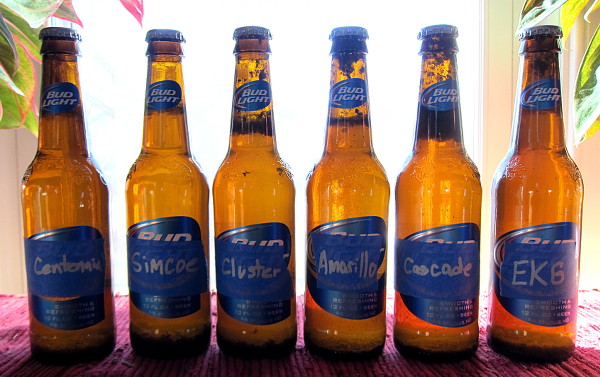Jubelale Backstory
A while back we brewed a Deschutes Jubelale 2009 clone, and it is great. It’s different than it should be, but in a really good way: it’s darker and stoutier, almost like a Russian Imperial Stout, but with less alcohol and not quite as bitter. Why?
It finished really, really high at 1.024, eight points above where it should have been. In a lighter beer that gravity would taste very out of balance, but it works great in darker ones. But like always, when something doesn’t turn out like you expect, you need a post-mortem.
The first reason for the high finish could be lack of oxygen in the wort. After you pitch the yeast they need replenish their nutrient reserves before they are healthy enough to reproduce and begin fermenting the wort. That requires oxygen, but most of the oxygen is driven off during the boil. This is why you’re told to rock the fermenter or pour the hot wort back and forth between buckets. Here, we pump the beer through a strainer into the keg, which apparently doesn’t work that well. This hasn’t been a huge problem until now, but we need to step it up.
The second reason is likely inconsistent fermentation temperature. Since the refrigerator with the two-stage controller is currently our kegerator, we’re running a bit under-staffed in the temperature control department for fermentation. All we’ve got is our styrofoam Son of Fermentation Chiller hooked up to an old thermostat wired for cooling, but not for heat. Come winter the basement temperature drops below optimal for ale yeast during the later stages of fermentation, leading to higher final gravities. We need to do better.
Double Rye IPA
So when we brewed another beer last week, we stepped up our game with an aeration stone and oxygen regulator and Bernzomatic O2 canister. Two 15 second bursts are all it takes to get more oxygen than 5 minutes of bucket rocking can do, giving the yeast a great start in life. Then we add some Fermcap S to keep the krausen down since we ferment in kegs. Imagine our surprise the next day when we find this:

And that is why Fermcap S is not God. No amount of Fermcap will prevent an overfilled keg, an overly active fermentation, and really happy yeast from becoming a volcano. Clean-up was not fun. Next time we’ll just put less wort in the kegs.
On the temperature front, we have a 7 cubic foot chest freezer on-deck and a slightly more affordable controller with support for a heater on the way. Stay tuned to see how that comes together.
Each time we get a bit closer to Brewing it Right. So will you!



